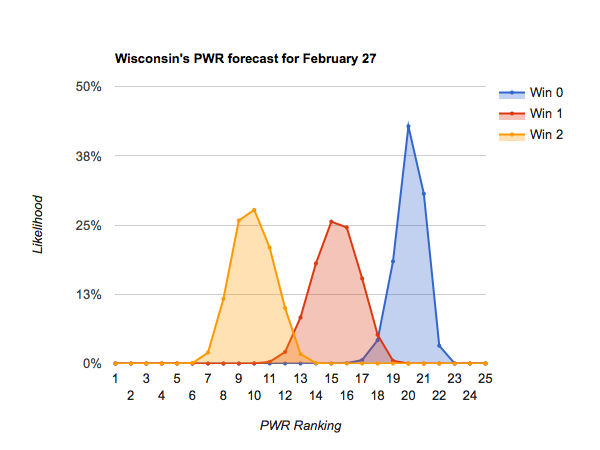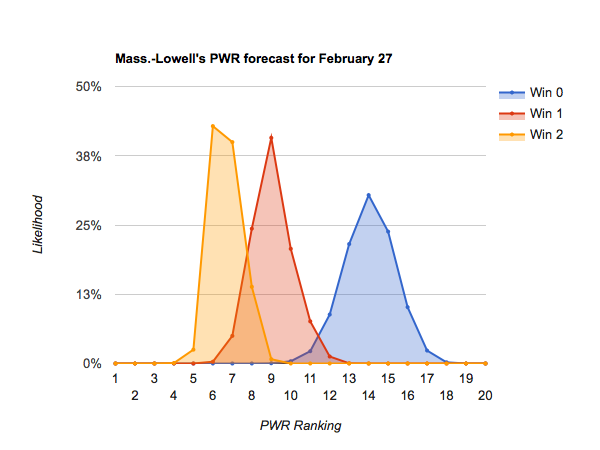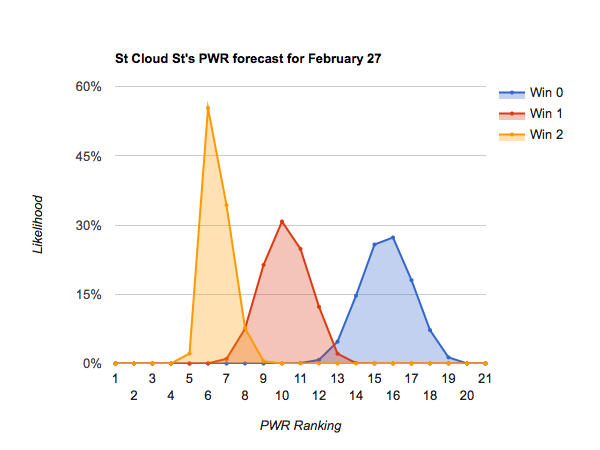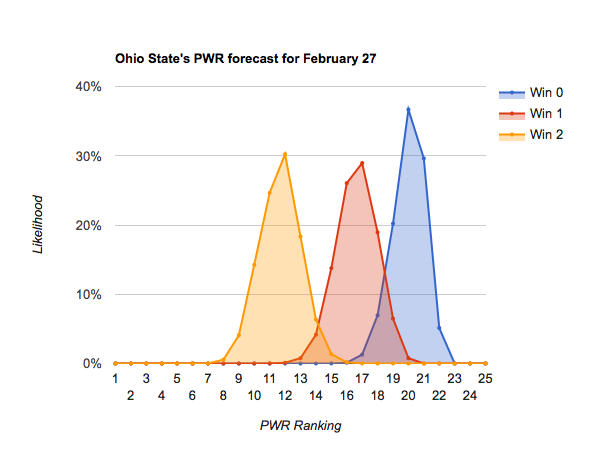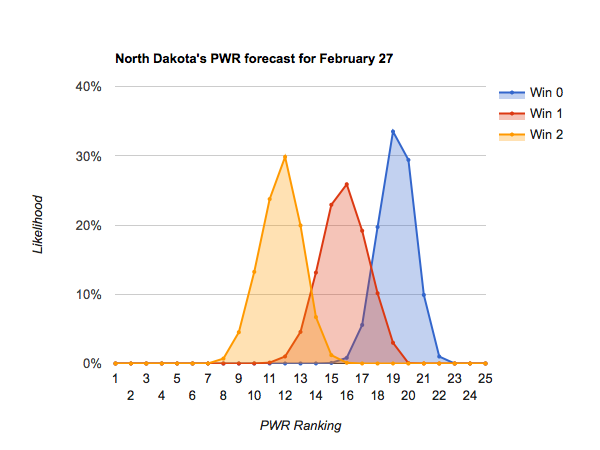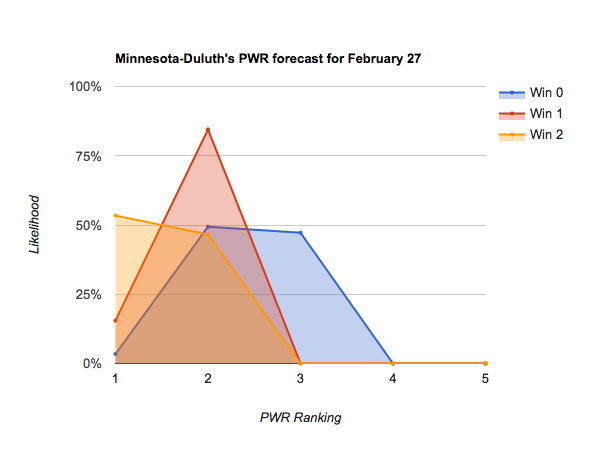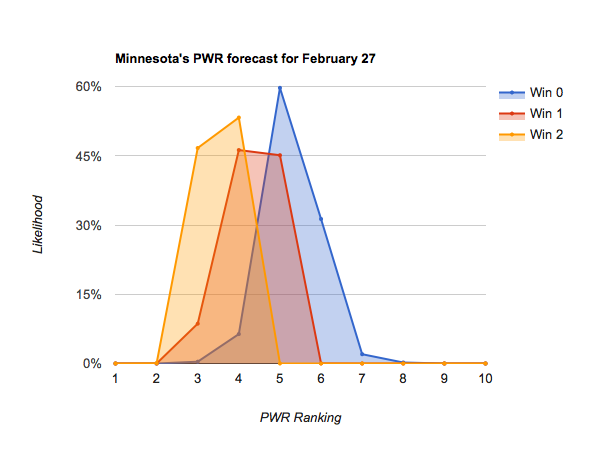An example of Boston University making the NCAA tournament at-large (that is, without winning the Hockey East tournament) follows:
https://goo.gl/UJMXKt
Generalizing that individual scenario, two things need to happen for Boston University to make the NCAAs at-large:
- Game outcomes need to be such that BU gets pushed up to #14 PWR, despite a loss
- Only two conference tournaments can be won by low PWR teams, so the #14 PWR team gets selected at-large
Getting BU to #14
One mandatory outcome for the Terriers to advance without winning the conference tournament seems to be North Dakota losing two games. Any win or tie by the Hawks, even if it doesn’t result in UND getting a bid, eliminates any chance of BU getting an at-large bid.
Beyond that, it takes one of a few particular combinations of outcomes to land BU at #14. There are 41 such combinations in the 12,288 possible outcomes in which Boston University wins the opening game versus Boston College but loses the Hockey East championship.
Getting #14 into the tournament
Even if Boston University gets to #14 in the PWR, as described above, only two conference tournaments can be won by teams ranked #15 or lower for the #14 team to get an at-large bid.
Because the WCHA (#17 Northern Michigan vs #24 Michigan Tech) and Atlantic Hockey (#20 Mercyhurst, #43 Robert Morris, #30 Air Force, and #34 Canisius) can only be won by teams that will finish #14 or lower, all other conference tournaments must be won by teams that finish in the top 14.
That’s guaranteed in the Big Ten, where only #2 Notre Dame and #4 Ohio State are vying for the championship. Also in a Hockey East tournament in which BU doesn’t win, a winner from among #15 Boston College, #9 Providence, and #7 Northeastern is guaranteed to be in the top 14.
So, from the ECAC, #3 Cornell or #11 Clarkson must take the championship rather than #22 Princeton or #26 Harvard. And, in the NCHC, #1 St Cloud St, #5 Denver, or #8 Minnesota Duluth must win (though #14 North Dakota losing is already a mandatory condition to get BU to #14, as stated above).
Summary
To get to #14 but not win the Hockey East championship, Boston University needs to win vs. Boston College but lose the championship game. The Terriers also need some help from North Dakota, which must lose in both the semifinal and consolation games.
Also, for the #14 team to advance to the NCAA tournament, the above must hold and Cornell or Clarkson must win the ECAC tournament.
- BU wins 1 game, loses championship
- North Dakota loses two games
- Cornell or Clarkson wins ECAC tournament
Those conditions leave 1024 remaining possible scenarios, in which 41 of them see BU hold onto the #14 slot and get an NCAA bid.
